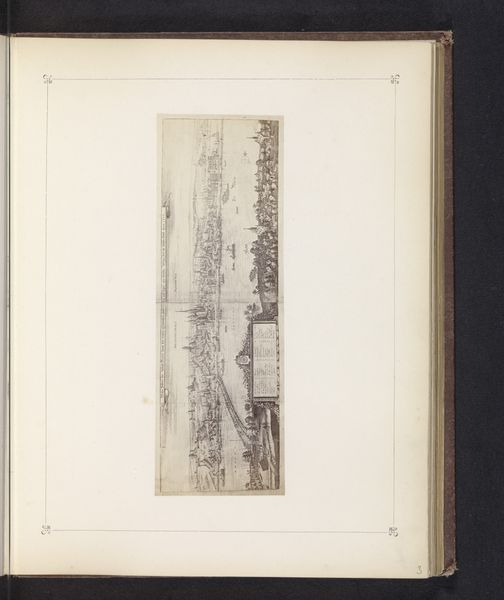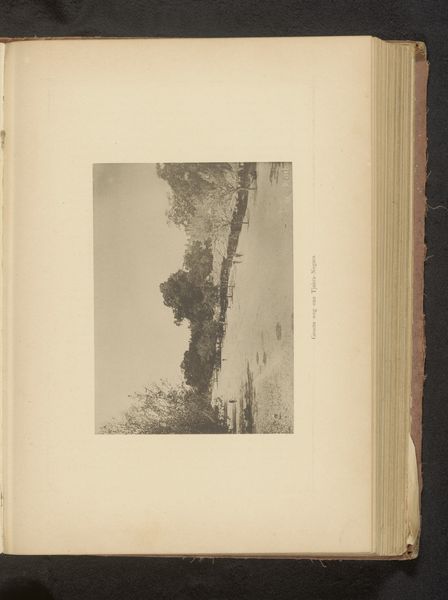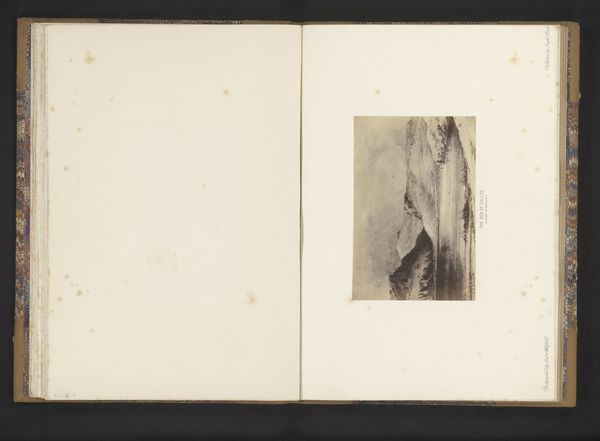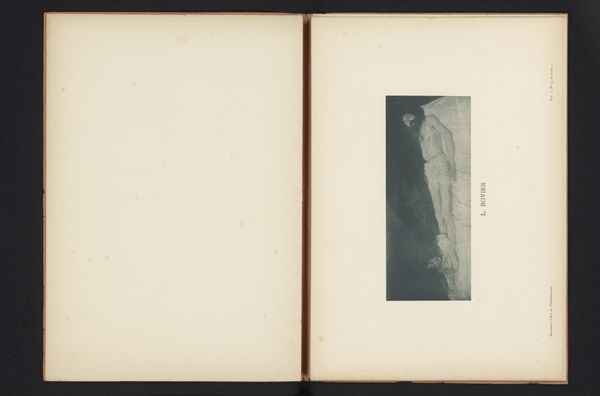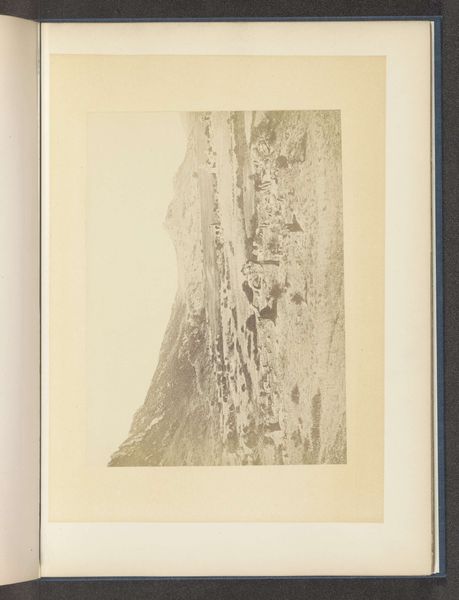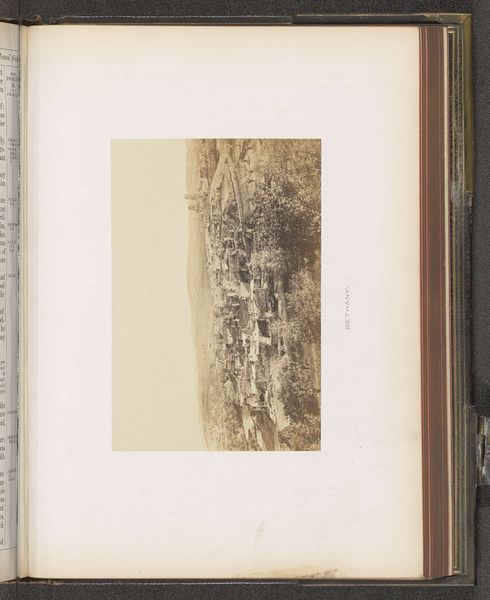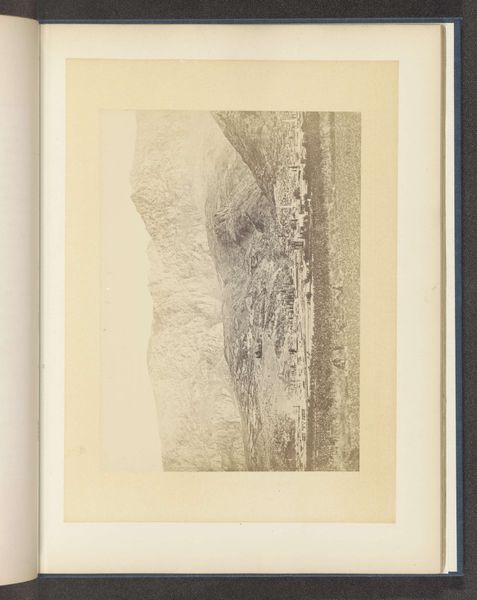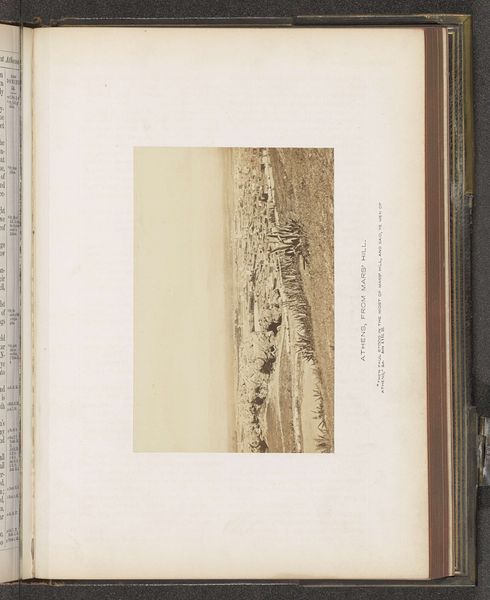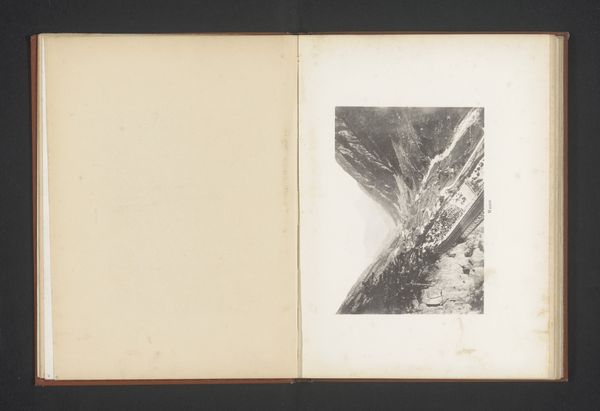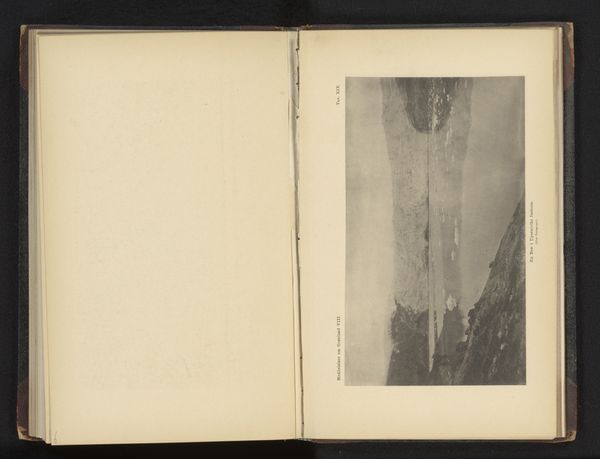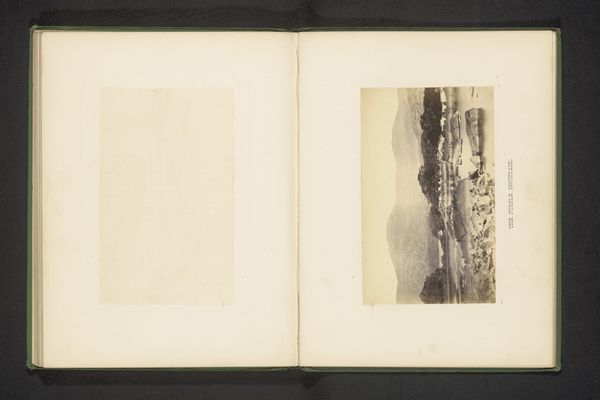
print, photography
# print
#
landscape
#
photography
#
cityscape
Dimensions: height 74 mm, width 226 mm
Copyright: Rijks Museum: Open Domain
Curator: Here we have "Gezicht op Mainz," a cityscape print captured through photography before 1872 by B. Erdmann. Editor: My first thought is about the compression, the towering effect that this vertical composition creates. It's almost claustrophobic. Curator: Consider the context in which this photograph was created. The 19th century was a period of enormous industrial and social upheaval. The verticality you mention could represent the rising power structures within the city, a sort of visual hierarchy imposing itself on the landscape. Editor: Perhaps. I see the formal elements contributing more directly. Look at the tones: soft grays layered one upon the other creating a flattening effect, compressing the image. And those blurred details—they add to the sense of an overwhelming urban density. Curator: Precisely. And who does this urban density truly serve? This image acts as a stark reminder of the ways in which city planning, or a lack thereof, impacted various social groups, often disenfranchising marginalized communities. The image becomes a critical document when considering questions of accessibility and equitable development. Editor: I agree there’s tension. But formally, the blurring gives the buildings an ethereal quality. There's a definite appeal in its soft and subtle beauty. Curator: That softness might romanticize what was, in reality, a period of exploitation and displacement for many. As a work that predates widespread availability and use of photographic images, this documentation can be very useful in discussions around authenticity and constructed representation. Editor: Photography freezes a moment in time; yes. The artist has composed elements into a scene where we, the viewers, see a blend of architecture, nature and progress. Curator: Yes, the question of whose progress and at whose expense remains key. Considering who would have had access to a photographic print such as this, raises questions about the circulation and control of visual narratives in that era. Editor: These older images contain such wealth. Thanks for providing context today! Curator: Thank you for your insights, as well! These kinds of images hold an intricate position, both artistic and politically significant.
Comments
No comments
Be the first to comment and join the conversation on the ultimate creative platform.
